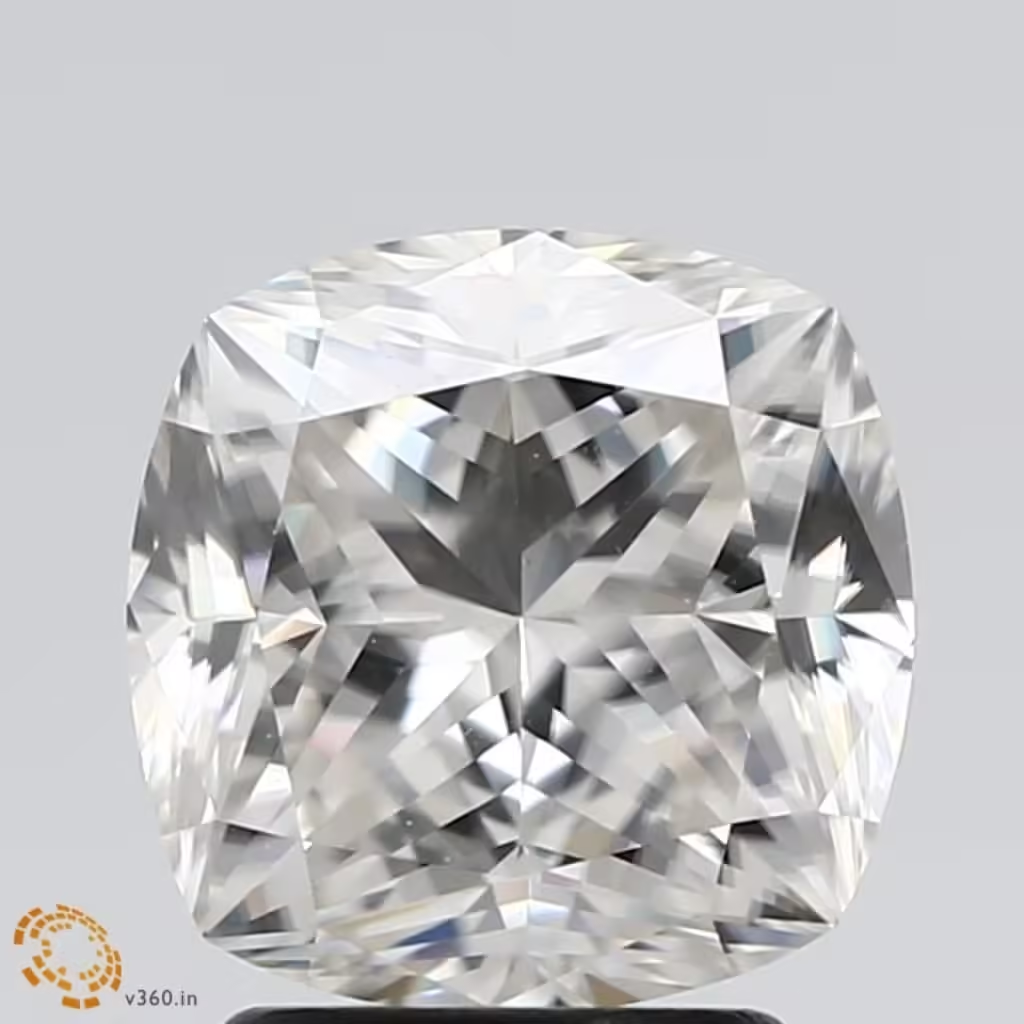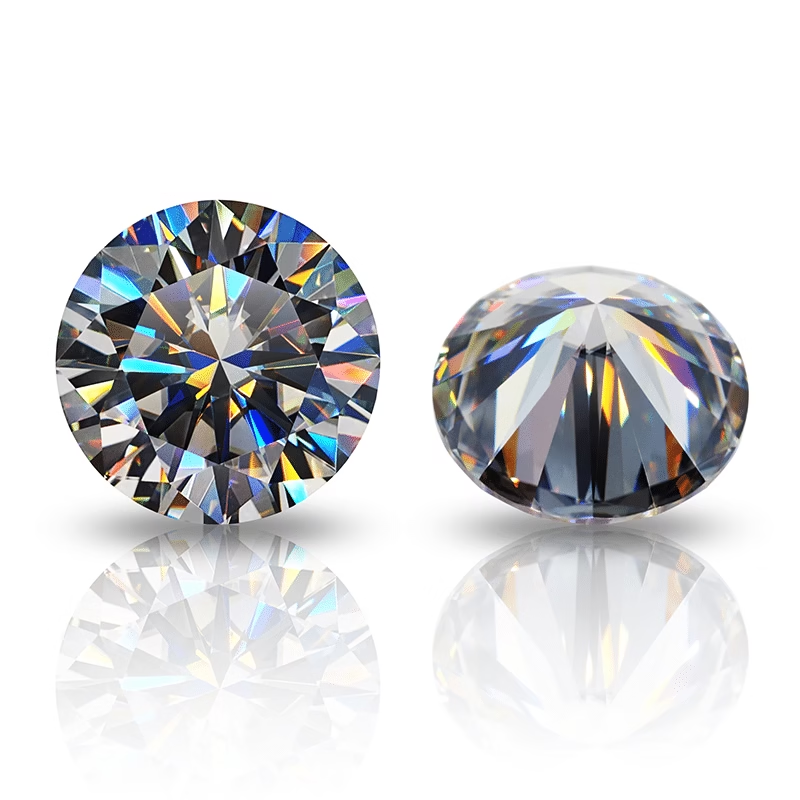Moissanite Diamond
While no gemstone can match a diamond’s hardness, Diamondresnu Moissanite stones come incredibly close Our Moissanite stones score a 9.25-9.50 on the Moh’s scale of hardness, while the diamond score is 10. Therefore, We would like to say that our moissanite to diamond size is also almost the same
Beauty of Faceting
forever Sparkal
Discover our selection of special natural colors in lab grown diamonds
for the most important woman of all.

Crushed Ice Cushion – White (DEF)
Starting 56$
The Budget Friendly Choice - Moissanite stones
Mining Free
Lab diamonds are a responsible choice since they are grown and involves no mining and exploitations.
Beauty & Quality
Lab grown diamonds have the same physical, chemical, and optical properties as mined diamonds
Value
Maximize your budget with high-value, affordable lab-grown diamonds Smart cost effective luxury!
What is a Moissanite?
Moissanite is a gemstone known for its stunning brilliance and durability. Onginally discovered in a meteor crater, it’s remarkably similar to diamonds but more affordable. Moissanite stands out with its exceptional fire, displaying more rainbow colors than a diamond under light. It scores 9.25 of the Mohs scale of hardness, making it highly resistant to scratches and perfect for daily wear. This eco-friendly choice is lab-created, ensuring ethical sourcing and minimal environmental impact, its growing popularity in engagement rings and fine jewelry is due to its beauty, resilience, and sustainability
Moissanite offers the luxury of diamonds without the high cost, making it an ideal choice for modem, budget-conscious consumers seeking quality and elegance.
Beauty of Faceting
forever Sparkal
Discover our selection of special natural colors in lab grown diamonds
for the most important woman of all.
Moissanite vs Diamond?
Moissanite and diamonds differ notably. Moissanite, composed of silicon carbide, is lab-created, offering a more ethical and eco-friendly choice. It’s renowned for superior brilliance and fire due to a higher refractive index, creating vibrant light displays. Diamonds, made of carbon, are the hardest known mineral (10 on the Mohs scale), boasting exceptional durability. Moissanite is significantly more affordable than diamonds, making it an attractive option for those seeking a diamond-like appearance without the high cost. While diamonds hold traditional value in jewelry, especially engagement rings, moissanite is gaining popularity for its sustainability, cost-effectiveness, and dazzling sparkle. The choice between them often hinges on personal preference, budget, and ethical considerations.
Beauty of colors
forever love
Discover our selection of special natural colors in lab grown diamonds
for the most important woman of all.
Upto 8% Off Diamond Coupons – Extra 7% Discount Code Today.
Newly In
Moissanite Stones
Fancy Factes Moissanite Stones
Classic Moissanite Shapes

How is Moissanite Made?
Moissanite is created through a sophisticated lab process known as the thermal decomposition of a preceramic polymer, specifically silicon carbide (SIC). The process, refined over years, involves several key steps
1. Creation of Silicon Carbide Powder. The process starts with the production of high-purity silicon carbide powder. This is achieved by combining silicon and carbon controlled environment.
2. Formation of Crystals: The silicon carbide powder is then subjected to high temperature and pressure, mimicking the natural conditions under which diamonds form. This environment promotes the growth of Large silicon carbide crystals over a period of several weeks
3. Cutting and Polishing: Once the crystals are fonned, they are carefully cut into gemstone shapes using precision tools. The cutting process is crucial as it determines the brilliance and fire of the final gernstone. After cutting, the stones am polished to achieve a high quality finish
Exquisite Collection Of Moissanite Jewellery

ENGAGEMENT RINGS

EARRINGS

PENDANTS

BRIDAL SET

BRACELETS

ETERNITY RING

COLORED MOS JEWELRY

CUSTOMIZED JEWELRY
Moissanite vs Lab Grown Diamond vs Diamond
Diamonds own the charts of beauty but alongside they toment the natural resources as well as your pockets. Lab Grown Diamonds are same as natural diamonds chemically and physically Developed after hundred years of compression of carbon derivatives whereas moissanites are still named to come from stars, these and many more differences makes this quetion important to be answered. Moissanite vs Diamond?
Choosing a crystal derived with the hustle of clearing land and landforms only to achieve a crystal for your finger is something against natural percepetions, whereas moissanite is achieved with the way approchable beauty without fuss, totally mining free
Moissanite
Moissanite is the one sparkling diamond born in the lab with the help of an artist gam cutter. It was first discovered by the french scientist “Henn Maissan” in 1893 Moissanite is the second hardest to diamonds on the Mohs hardness
Lab Grown Diamond
On the whole, tab diamonds possess the same physical and chemical properties as natural Samonds; moreover, in terms of appearance, both natural diamonds and lab diamonds are the same, but the main ditference between them is their manufacturing process
Natural Diamond
Diamond is a solid form of pure carbon with its storms arranged in a crystal. Diamonds are discovered through mining, which requires a lot of labor to dig up and find the diamonds. After that, they are cut and shaped by an artist’s gem cutter to obtain their perfect shape.
Giyes new tum to your special occasion with this elegant Moissanite by the Diamondrensu! The lab grown diamonds (which are also known as eco-friendly diamonds, lab created diamonds, conflict free diamonds, man-made diamond, etc) are man made diamonds crafted in the lab. Lab Grown Diamonds are better alternative to a natural diamond. If you wish to buy an engagement ring or other piece of jewelry in burtget las grown diamond is an option
Natural Diamonds are spectacular because their hardness rating is 10, and they are super sparkly. However, the price of these stones is a drawback. As compared to Moissanite and Lab-Created Diamonds, natural diamonds are too expensive.
Understanding the Difference
Moissanite, lab-grown diamonds, and natural diamonds each offer unique qualities. Moissanite, a silicon carbide gemstone, stands out with exceptional brilliance and fire, often outshining diamonds. Lab-grown diamonds, while chemically identical to natural diamonds, offer eco-friendly and cost-effective alternatives. Natural diamonds, treasured for centuries, are valued for their rarity and traditional appeal. Understanding these differences helps in making an informed choice, whether seeking sustainable luxury or timeless natural beauty. Choose based on personal values, whether it’s environmental consciousness or a preference for natural rarity.
Diamond Element Properties
Moissanite
Lab Grown Diamond
Diamond
Mining
Mining Free
Mining Free
Mined Diamonds
Eco-Friendly
Yes
Yes
Na
Refractive Index
2.65-2.96
242
2.42
Hardness
9.25-9.50
10
10
Conflict Free
Yes
Yes
May Be
Fire
0.104
0.044
0.044
Luster
20.40%
17.20%
17.20%
Toughness
Excellent
Excellent
Excellent
Durability
Life Time
Life Time
Life Time
Certificate
Diamondrensu
IGI/GIA
IGI/GIA
Price
$
$$
$$$$$
Moissanite is a lab-created gemstone known for its diamond-like brilliance and durability, popular as an ethical, budget-friendly alternative.
Moissanite is created in labs using a process called silicon carbide crystallization, replicating its natural formation for a durable, brilliant gemstone.
Moissanite ranks 9.25 – 9.50 on the Mohs scale, making it highly resistant to scratches and ideal for daily wear.
Yes, moissanite closely resembles diamonds with its high brilliance and clarity, making it a convincing and attractive alternative.
No, moissanite maintains its clarity and sparkle over time and does not become cloudy, ensuring lasting brilliance
The term “oil slick” in the context of moissanite refers to a particular visual effect that can occur on the surface of these gemstones. This effect resembles a pattern of rainbow-like colors, similar to the sheen of oil on water. It’s important to note that this is not a flaw or a defect in the moissanite itself.
Yes, in most cases, the “oil slick” effect can be minimized or removed. Professional jewelers often use specific cleaning methods and solutions to gently remove any surface coatings without damaging the gemstone. It’s advisable to consult with a moissanite specialist or a reputable jeweler for proper guidance and cleaning services.













































